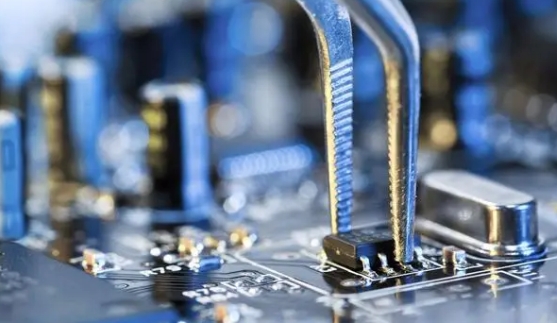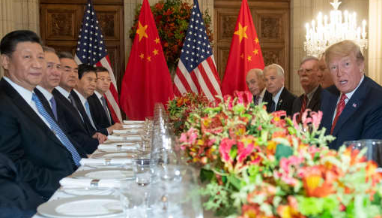- Ameya360 Component Supply Platform >
- Trade news >
- The Trade War Has Limited Impact on North American Data Centers, but Server Makers May Consider Moving Production Facilities out of China
The Trade War Has Limited Impact on North American Data Centers, but Server Makers May Consider Moving Production Facilities out of China
According to the latest report by DRAMeXchange, a division of TrendForce, North American markets contribute to around 40% of the global server demand, but Trump’s threat of steep tariffs on Chinese goods, including server imports, may bring more risks to Taiwanese server ODMs, whose production are mainly based in China. Therefore, Taiwanese server makers are now considering moving their production facilities back to Taiwan. With the next wave of tariffs going into effect on September 24, tariffs of 10 percent will be imposed on Chinese products like servers, server modules, motherboards and network switches, so server makers are bound to relocate their facilities to minimize the impacts of the trade war on their businesses.

The trade war has limited impact on North American Data Centers
According to Mark Liu, senior analyst at DRAMeXchange, around 40% of the global server demand comes from North American markets, among which ODM Direct orders from Google, AWS, Microsoft and Facebook account for 20% of the global server demand. However, the new round of tariffs may have limited impact on North American Data Centers, who are unlikely to face significant cost increase of servers, for the server manufacturers have taken measures to minimize the impacts.
Particularly, Google and AWS will be the least influenced, for the server ODMs working with the two companies locate the manufacturing houses mainly in Taiwan. These ODMs will continue to increase the share of Taiwan-based production. In addition, the assembly houses of servers are located in Europe and America, thus will not be influenced by the tariffs. As for Facebook and Microsoft, the two have negotiated with their server ODM partners in advance, taking risk assessment and figuring out measures for the future. Their ODMs have already developed plans of moving production facilities, and will make adjustments according to the updates of trade policies.
Server ODMs are considering moving their production facilities out of China to minimize impacts
On the contrary, Taiwanese server ODMs, such as like Quanta, Wistron, IEC, and MiTAC, will be largely impacted by the latest round of tariffs due to the rising costs for key components, including motherboards and server modules. Some of the motherboards are made in China-based L6 manufacturing houses, while the server modules are assembled and packaged in China as well. In comparison, their L10 assembly houses, which are mainly located in the tax-free zone on the US-Mexico border, will be hardly influenced.
Quanta mainly focuses on ODM Direct business and making server products for data center customers in North America, with Google, AWS, Azure and Facebook being its major clients. Quanta, which locates its L10 assembly houses in the U.S., may be significantly influenced by the new tariffs if the servers are directed imported from China. Therefore, it has been considering moving the server manufacturing out of China to avoid the cost increases of server units and server components. In addition, the rising labor costs in China have also made the server makers relocate their facilities in Taiwan and Southeast Asia.
IEC will be the least influenced by the new round of tariffs among the major server makers, because over 60% of its revenue comes from conventional ODM business, where it makes servers for other branded server suppliers. Following that, orders from major American and Chinese Cloud service companies like Google, Baidu and Alibaba, also contribute to a considerate part of IEC’s business. For products to be shipped to North America, IEC will continue to assemble them in Czech and Mexico. To avoid potential trade issues and to lower the costs, IEC may also move its production lines of barebone motherboard and Level 6 grade server from Shanghai back to Taiwan in the future.
Wistron, as the world’s largest supplier of motherboard and the server supplier to OEMs including Dell and HPE, will be greatly impacted by the new tariffs for its manufacturing houses are mainly located in China. To cope with the trade issues through more flexible production plans, Wistron may build new production lines in Taiwan in addition to current facilities in Zhongshan, China. The assembly of servers for North American data center customers will remain in the tax-free border zone, thus will be less impacted by the trade war.
DRAMeXchange notes that, for the short term, server makers tend to move the manufacturing out of China or relocate the assembly sites to avoid the potential tariffs. However, considering the potential risks in the long run, the server makers may consider moving the facilities back to Taiwan.
Online messageinquiry

China's Xi is about to deliver a speech that could have major consequences for the trade war

US will hold off on raising China tariffs to 25% as Trump and Xi agree to a 90-day trade truce

Expect a photo op and a 'mock deal' at the Trump-Xi meeting — not a long-term truce, says economist
- Week of hot material
- Material in short supply seckilling
| model | brand | Quote |
|---|---|---|
| CDZVT2R20B | ROHM Semiconductor | |
| BD71847AMWV-E2 | ROHM Semiconductor | |
| MC33074DR2G | onsemi | |
| TL431ACLPR | Texas Instruments | |
| RB751G-40T2R | ROHM Semiconductor |
| model | brand | To snap up |
|---|---|---|
| ESR03EZPJ151 | ROHM Semiconductor | |
| BP3621 | ROHM Semiconductor | |
| IPZ40N04S5L4R8ATMA1 | Infineon Technologies | |
| STM32F429IGT6 | STMicroelectronics | |
| BU33JA2MNVX-CTL | ROHM Semiconductor | |
| TPS63050YFFR | Texas Instruments |
- Week of ranking
- Month ranking
Qr code of ameya360 official account
Identify TWO-DIMENSIONAL code, you can pay attention to


Please enter the verification code in the image below:






















